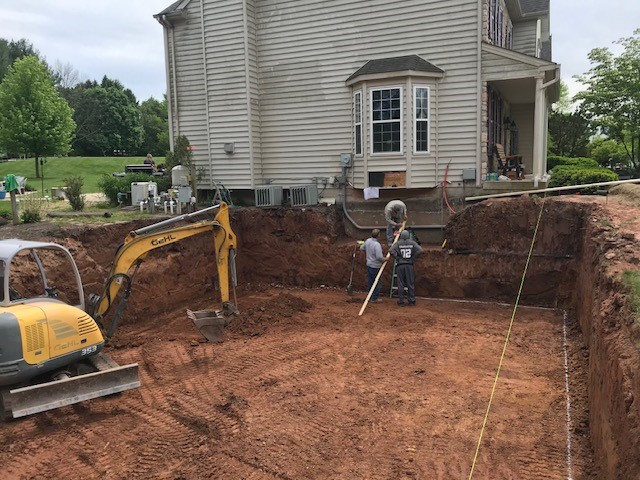Comprehensive Excavation Methods: Mastering the Fundamentals for Success
In the world of building and construction and civil design, the significance of reliable excavation approaches can not be overemphasized. The cautious preparation, accurate execution, and precise attention to information called for in excavation projects demand a detailed approach that includes different basic aspects. From first soil evaluation to the implementation of precaution and regular development surveillance, grasping these core aspects is essential for achieving success in any kind of excavation endeavor. The true mastery lies not simply in recognizing these basics yet in flawlessly integrating them to navigate the intricacies of excavation jobs with skill.
Understanding Excavation Job Preparation

The initial phase of any type of excavation task is the planning phase, where essential decisions are made that can considerably influence the outcome of the project. Understanding the project budget plan, timeline, and extent restrictions is critical for creating a detailed excavation strategy that makes certain the job's success.
One key aspect of excavation project planning is the development of a detailed timeline that describes the sequence of activities, milestones, and deadlines. This timeline acts as a roadmap for the job team, allowing them to track progression and make needed modifications to make sure the job remains on schedule. In addition, a well-defined budget plan that represents all expenditures, consisting of devices leasing, labor costs, and materials, is essential for avoiding cost overruns and delays. By thoroughly considering all these factors throughout the drawing board, excavation projects can be implemented efficiently and efficiently, causing successful results.
Soil Analysis and Website Examination
Carrying out complete dirt evaluation and site examination is a vital action in the preparation phase of any excavation task. Dirt evaluation involves determining the composition, framework, and properties of the dirt at the excavation website. This details is crucial for comprehending the soil's bearing capability, wetness content, and potential for erosion, which are crucial factors in determining the excavation methods and devices required for the task.
Website examination goes past dirt evaluation and encompasses a more comprehensive evaluation of the total website problems. This analysis consists of identifying any kind of possible threats, such as below ground energies, ecological worries, or unsteady terrain, that might impact the excavation process. By thoroughly evaluating the site, task supervisors can create reliable excavation methods that focus on safety, effectiveness, and environmental management.
Using sophisticated innovations like ground-penetrating radar, soil tasting, and drone surveys can boost the precision and efficiency of soil analysis and site assessment. Investing time and sources in these initial steps can ultimately conserve time and stop costly hold-ups or issues throughout the excavation process.
Equipment Selection and Use
Effective excavation jobs count heavily on strategic tools choice and application to make sure optimum efficiency and performance. Selecting the best equipment for the work is critical in maximizing performance and decreasing downtime. Elements such as the kind of soil, depth of excavation, and task scope play a substantial role in identifying the most ideal equipment for the job at hand.

In addition to picking the ideal equipment, appropriate use is essential to job success. Operators should be trained to handle the equipment safely and efficiently - lancaster trenching. Routine upkeep checks and timely fixings aid protect against break downs and make sure constant performance check over here throughout the task
Precaution and Rules Conformity
In the realm of excavation projects, focusing on safety and security measures and conformity with policies is paramount to guaranteeing a legitimately audio and safe functional atmosphere. Safety steps encompass a series of methods, including performing detailed site assessments, applying appropriate signage and obstacles, and supplying adequate security training for all personnel included in the excavation procedure. Adherence to regulations, such as OSHA requirements in the USA, guarantees that the excavation project satisfies the necessary criteria to safeguard employees, onlookers, and the surrounding setting.

Surveillance Development and Adjusting Strategies
How can forecast supervisors successfully track the development of excavation jobs and adjust their approaches accordingly to maximize end results? Monitoring development is essential for making sure that excavation projects remain on track and meet deadlines.
Verdict
In verdict, mastering the fundamentals of comprehensive excavation strategies is crucial for the success of any task. By comprehending task preparation, assessing dirt and website problems, choosing suitable equipment, abiding with security regulations, and keeping track of development, task managers can make certain a reliable and smooth excavation process. Applying these approaches will bring about successful end results and minimize prospective threats or problems throughout the excavation project.
The preliminary stage of any excavation task is the preparation stage, where important decisions are made that can substantially influence the result of the task. Understanding the job timeline, extent, and budget restraints is important for developing a comprehensive excavation strategy that ensures the task's success.
How can predict supervisors efficiently track the innovation of excavation projects and adapt their approaches appropriately to optimize outcomes? By very closely monitoring progress and being ready to adapt methods, project managers can enhance the overall success of excavation tasks.
By comprehending project preparation, examining dirt and website conditions, picking appropriate tools, conforming with security regulations, and checking progression, task managers can guarantee a effective and smooth excavation process.